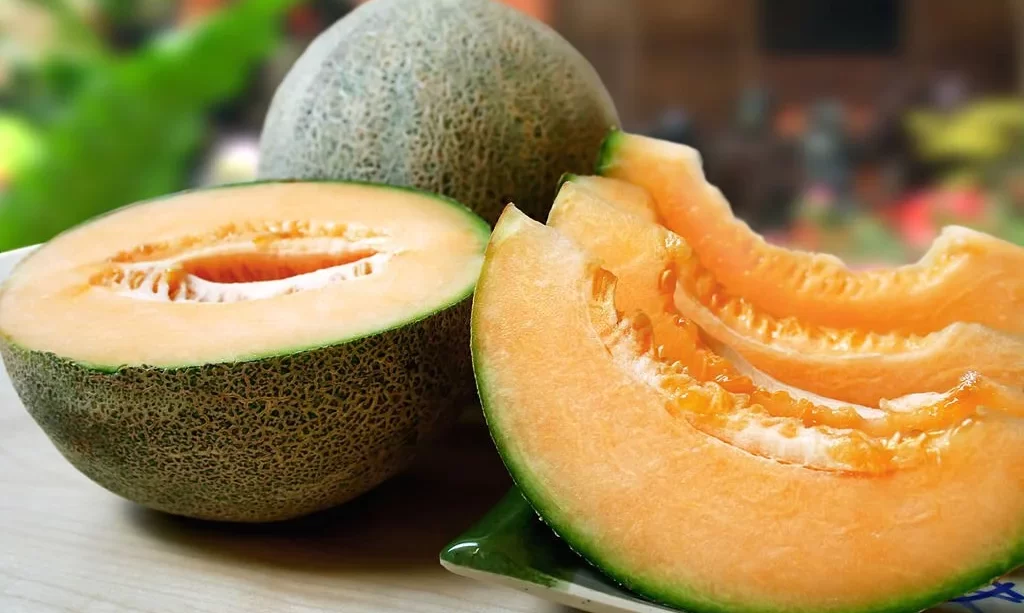Cantaloupe, with its juicy and sweet flesh, is a beloved summer treat that graces our tables and tantalizes our taste buds. Whether enjoyed on its own or added to fruit salads and desserts, its vibrant flavor is a true delight. However, if you’ve ever cut into a cantaloupe and wondered how long its lusciousness will last in the fridge, you’re not alone. To avoid food waste and enjoy this delectable fruit at its best, it’s essential to know just how long cut cantaloupe can be safely stored. In this guide, we’ll explore the shelf life of cut cantaloupe in the fridge and offer tips to keep it fresh for as long as possible.
- Dried sweet and chewy cantaloupe chunks, 5 LB bag
- Tropical taste that is delicious and refreshing
- Try mixing with your favorite nuts for a tropical blend
- Great for baking, snacking, trail mixes etc…
The Initial Shelf Life
Cantaloupes, in their whole, uncut form, are known for their relatively long shelf life. When left on the countertop, a whole cantaloupe can stay fresh for up to a week before it fully ripens. During this time, it retains its firm texture and subtle sweetness, making it a perfect addition to your meals or a refreshing snack.
However, once you’ve sliced into a cantaloupe, the clock starts ticking on its freshness. Cutting exposes the fruit’s flesh to air and moisture, which can hasten spoilage. This transition from a whole cantaloupe to cut segments brings a change in storage requirements and shelf life. In the sections that follow, we’ll delve into the factors that influence how long cut cantaloupe lasts in the fridge and how to maximize its deliciousness during this time.
Proper Storage
To prolong the freshness of cut cantaloupe and prevent it from deteriorating prematurely, proper storage is paramount. Here’s how to ensure your cut cantaloupe remains at its best:
- Airtight Containers: Place the cut cantaloupe in an airtight container to shield it from exposure to air, which can lead to faster spoilage. Alternatively, you can tightly wrap the cantaloupe in plastic wrap or aluminum foil.
- Seal Out Moisture: Moisture can accelerate the deterioration of cut fruit. Use paper towels to line the bottom of the container or place them between the cut cantaloupe pieces to absorb excess moisture.
- Minimal Air Contact: Ensure that there’s minimal airspace inside the container. A snug fit reduces the surface area exposed to air and helps keep the fruit fresh.
- Keep It Cold: Store the container with the cut cantaloupe in the refrigerator as soon as possible. The quicker you refrigerate it, the longer it will stay fresh.
Refrigeration is Key
Refrigeration is the secret to extending the shelf life of cut cantaloupe. The cool, controlled environment of the fridge helps slow down the natural ripening and spoilage processes. Here’s how to utilize your refrigerator effectively:
- Temperature: Store the cut cantaloupe in the refrigerator at a temperature of 40°F (4°C) or lower. This temperature range is ideal for slowing down bacterial growth and maintaining the fruit’s quality.
- Location: Place the container with the cut cantaloupe in the coldest part of the refrigerator, typically toward the back. This ensures that the fruit remains at a consistently low temperature.
- Separation: To prevent cross-contamination and maintain the cantaloupe’s flavor, store it away from strong-smelling foods like onions or garlic. Consider using a designated produce drawer if available.
- Covering: Ensure that the cut cantaloupe is tightly sealed to prevent odors from the fridge from affecting its flavor. Use an airtight container or wrap it securely.
By refrigerating your cut cantaloupe promptly and following proper storage techniques, you can maximize its shelf life and savor its sweet, juicy taste for an extended period. In the next sections, we’ll delve into the specific duration of freshness you can expect from cut cantaloupe in the fridge and how to recognize signs of spoilage.
How Long Does It Last?
Cut cantaloupe is undeniably delicious, but its shelf life in the fridge is limited compared to a whole, uncut melon. Generally, you can expect cut cantaloupe to remain fresh for approximately 3 to 4 days when stored properly in the refrigerator. However, several factors can influence this duration:
- Ripeness: The degree of ripeness when you cut the cantaloupe plays a role. Riper fruit may spoil more quickly than less ripe fruit.
- Storage Conditions: How well you follow proper storage guidelines, such as using airtight containers, can significantly impact shelf life.
- Initial Freshness: The condition of the cantaloupe at the time of purchase can affect how long it lasts. Choose a ripe but not overripe cantaloupe when you initially bring it home.
While the 3 to 4-day guideline offers a general timeframe, always rely on your senses and visual cues to determine if cut cantaloupe is still safe to consume. Pay attention to any changes in color, texture, or odor.
Signs of Spoilage
Detecting signs of spoilage in cut cantaloupe is essential for ensuring food safety. Here are some common indicators that your cut cantaloupe may have gone bad:
- Mold Growth: The presence of mold, visible as fuzzy or irregular spots on the flesh, is a clear sign that the cantaloupe is no longer safe to eat.
- Off-Putting Odor: A foul or sour odor emanating from the fruit is a strong indicator of spoilage. Fresh cantaloupe should have a sweet, fruity scent.
- Texture Changes: Spoiled cantaloupe can become overly soft, mushy, or slimy. Healthy cantaloupe should maintain a firm yet tender texture.
- Unusual Color: Discoloration, such as a shift from vibrant orange to a dull or brownish hue, can signal spoilage.
- Bitter Taste: If you detect a bitter or unpleasant taste when you sample a piece of cantaloupe, it’s best to discard it.
Always use your best judgment when assessing the freshness of cut cantaloupe. If you observe any of these signs of spoilage or have doubts about its safety, it’s advisable to err on the side of caution and dispose of the fruit to prevent potential foodborne illness.
Tips to Extend Shelf Life
To make the most of your cut cantaloupe and extend its shelf life, consider these helpful tips:
- Regularly Check and Rotate: Keep an eye on the cut cantaloupe in the fridge. If you notice any condensation in the container, gently blot it with a paper towel to prevent excess moisture.
- Individual Portions: Cut cantaloupe into smaller, bite-sized portions rather than large chunks. This allows you to use only what you need, minimizing exposure to air and moisture.
- Lemon Juice Splash: A light drizzle of fresh lemon juice over the cut cantaloupe can help slow down oxidation and maintain its vibrant color.
- Use Produce Bags: If you don’t have an airtight container, consider placing the cut cantaloupe in produce bags designed to preserve freshness.
- Consume Quickly: While cut cantaloupe can be stored for a few days, it’s best enjoyed as fresh as possible. Try to consume it within the first couple of days for the best taste and texture.
Creative Uses for Leftover Cantaloupe
Even if your cut cantaloupe is approaching the end of its shelf life and isn’t at its prime for snacking, there are creative ways to give it a second life:
- Smoothies: Blend overripe cantaloupe with yogurt, honey, and a splash of citrus juice for a refreshing smoothie.
- Sorbet: Puree overripe cantaloupe with a touch of sugar and freeze it for a homemade cantaloupe sorbet.
- Fruit Salad: Combine slightly overripe cantaloupe with other fruits like berries, kiwi, and citrus segments for a tasty fruit salad.
- Infused Water: Add slices of cantaloupe to a pitcher of water for a subtle, refreshing infusion.
- Soup: Experiment with chilled cantaloupe soup recipes, often paired with ingredients like mint, yogurt, and a hint of spice.
- Frozen Treats: Make cantaloupe popsicles by blending overripe cantaloupe with a little honey or agave nectar, pouring it into molds, and freezing.
Conclusion
Understanding how long cut cantaloupe lasts in the fridge and learning to spot signs of spoilage is essential for making the most of this sweet and juicy fruit. By following proper storage guidelines and using your senses to assess freshness, you can enjoy cut cantaloupe safely and deliciously.
Additionally, don’t forget that even when your cantaloupe is past its peak, there are creative ways to repurpose it, ensuring that none of this delectable fruit goes to waste. From smoothies to sorbet and infused water to fruit salad, there’s a world of culinary possibilities waiting to be explored.
So, whether you’re savoring pristine slices of freshly cut cantaloupe or turning overripe segments into tasty treats, you can relish the delightful flavors of this summer fruit while minimizing food waste.




